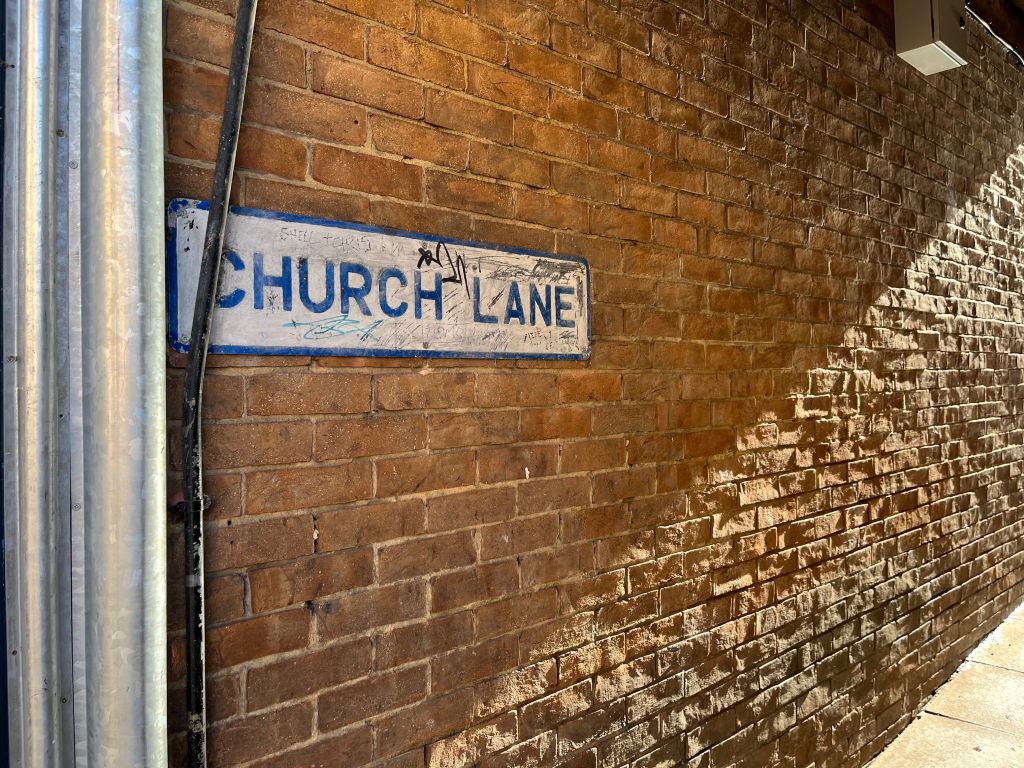Church Lane is one of the oldest surviving parts of Darlington, and it’s hidden away right at the heart of the town, yet very easy to visit.
Situated just off Tubwell Row, in the shadow of St Cuthbert’s Church, this tiny alleyway is a quiet little access route to the Market Place, Dolphin Centre, or across to Feethams. However, stop and look around for a minute and you’ll realise it has some tantalising remnants of the past.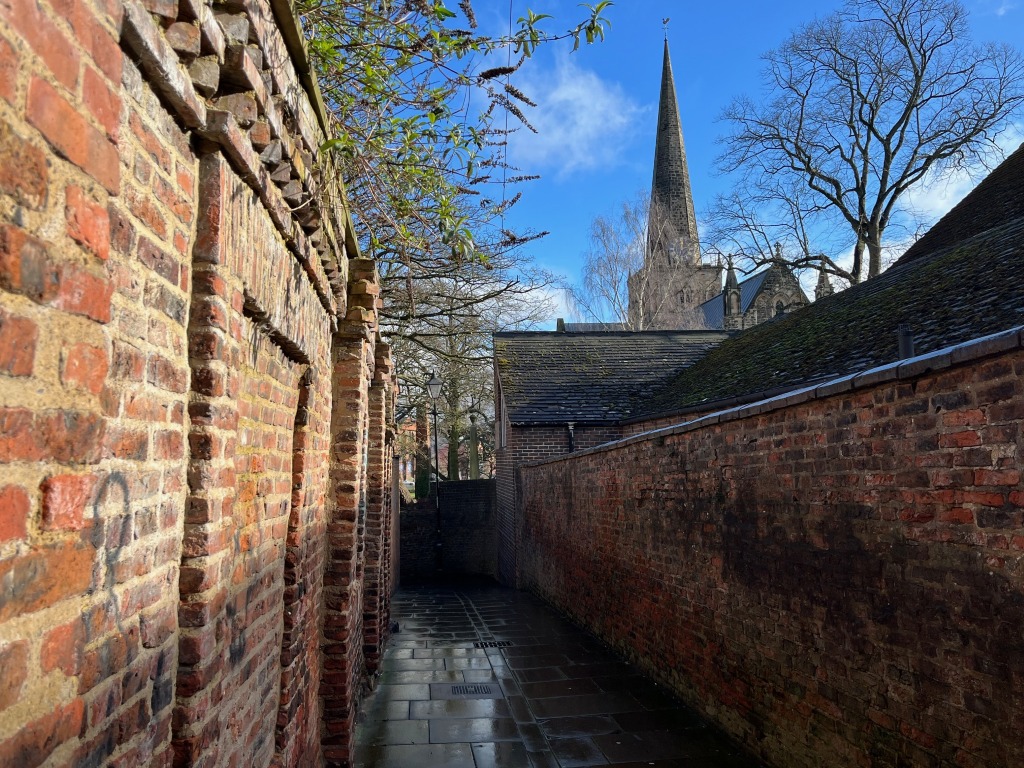
While walking along the L-shaped lane, which is not wide enough for any cars to pass along, you’ll see a fragment of Tudor wall of handmade brick.
To get your bearings, this is behind the Hoptimist (former Nag’s Head) pub on Tubwell Row, and its significance is that it’s the sole survivor of the Great Fire of Darlington on 7th May 1585 in which some 273 homes were burned and 800 people made homeless.
Great Fire of Darlington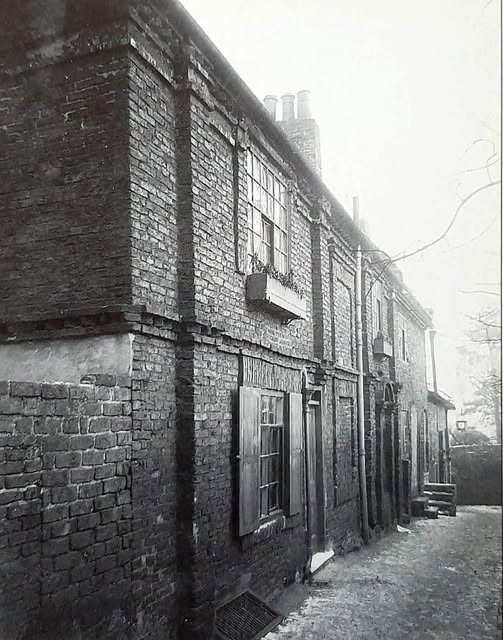
The Great Fire of Darlington, on 7 May 1585, was one of those dramatic ruptures in a town’s history — a conflagration that swept away much of the medieval core in a matter of hours. According to local tradition and later historical research, what began in the High Row and Skinnergate area quickly turned into a “most fierce and terrible fire.” In barely two hours it is said to have destroyed 273 timber-built houses, leaving around 800 of Darlington’s then-population of roughly 1,200 people homeless. Some accounts note that the town’s water supply was already under strain—difficulties in drawing enough water may have helped the blaze spread more rapidly.
Much of central Darlington, its medieval buildings, houses and businesses, was swept away in this raging fire. The subsequent rebuilding effort largely respected and re-used the existing medieval street plan. However, this small remnant of the past survived and is a tantalising link between the modern and ancient town.
The geometric pattern of burgage plots, narrow lanes, yards, and “wynds” (small back alleys) survived the fire’s destruction and became the backbone of the restored townscape. In the centuries since, that medieval layout has persisted in Darlington’s town centre, even if almost all of the buildings were new.
Hidden Church Lane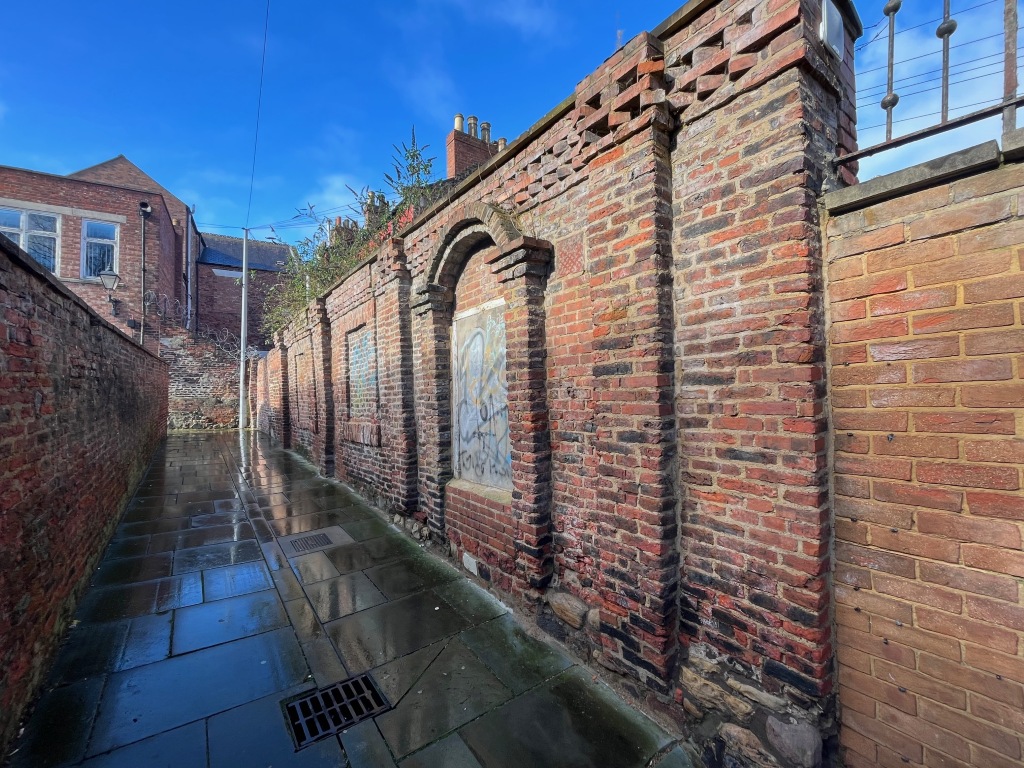
Church Lane today is a narrow back street that now passes largely unnoticed. Here a small fragment of Tudor handmade brick wall, tucked behind what used to be the Nag’s Head, is believed to be the only visible survivorship from before 1585. That wall is unassuming and easily missed, but it bears silent witness to how thoroughly the fire must have consumed its neighbours.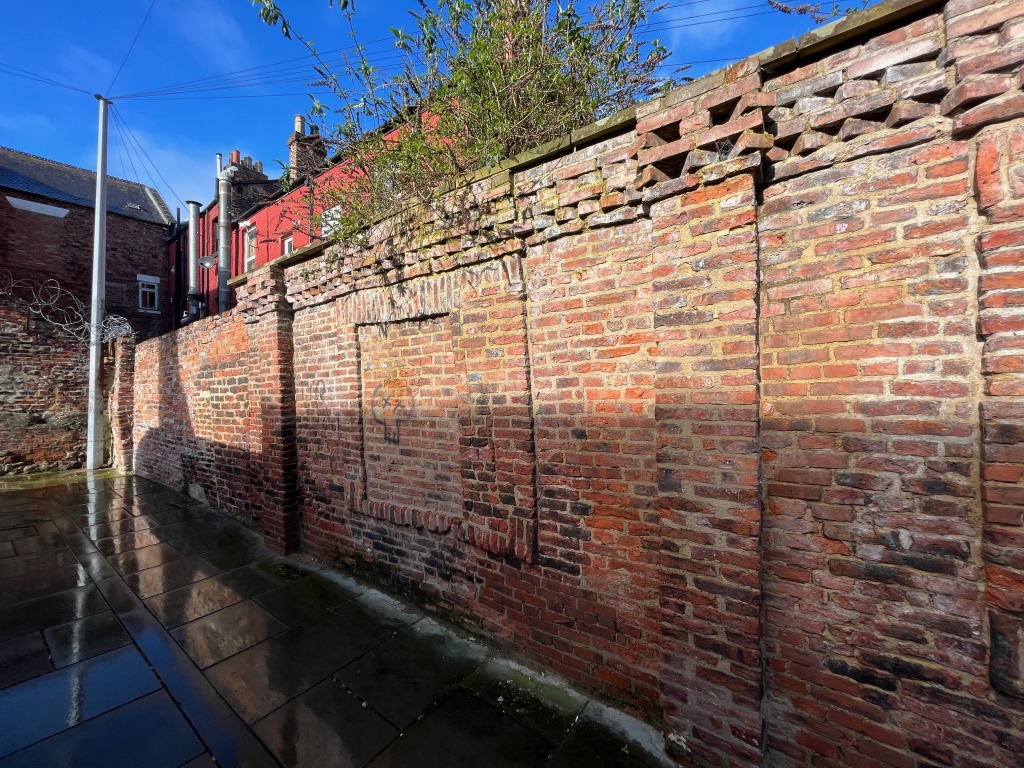
Walking along Church Lane today, one might glance at later brick facades and modern frontage, but then catch a glimpse of that older wall, its texture different, its lines less regular. That fragment is a physical connection to a Darlington that would have seemed, to its own inhabitants in 1585, all too fragile in the face of fire.

